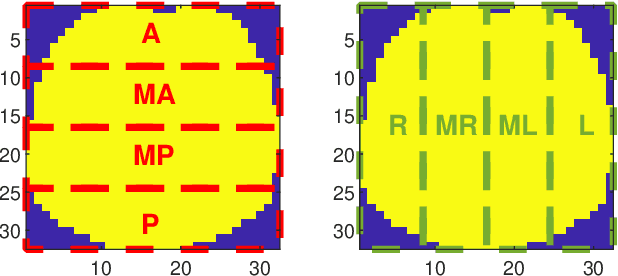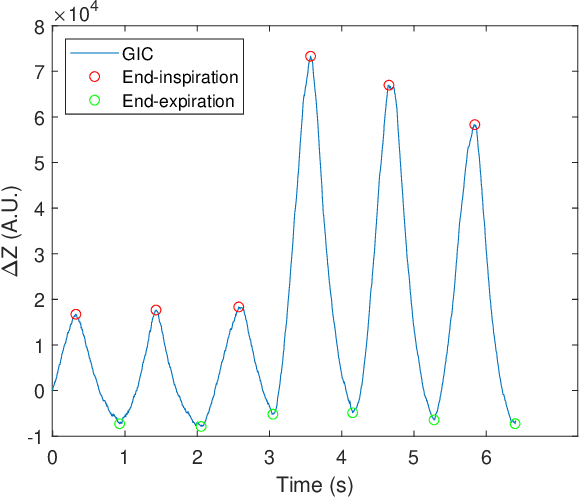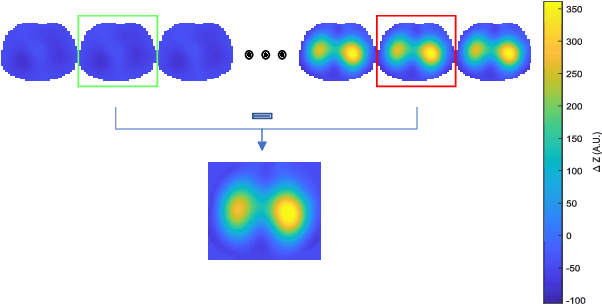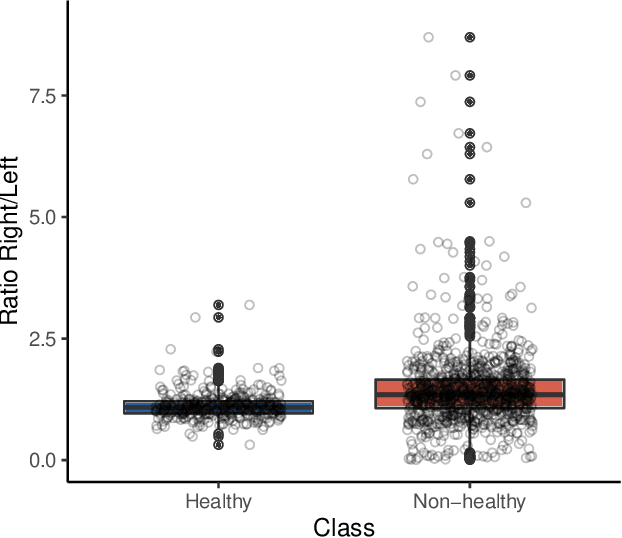Grigorios-Aris Cheimariotis
Classification of Electrical Impedance Tomography Data Using Machine Learning
Aug 02, 2021



Abstract:Patients suffering from pulmonary diseases typically exhibit pathological lung ventilation in terms of homogeneity. Electrical Impedance Tomography (EIT) is a non-invasive imaging method that allows to analyze and quantify the distribution of ventilation in the lungs. In this article, we present a new approach to promote the use of EIT data and the implementation of new clinical applications for differential diagnosis, with the development of several machine learning models to discriminate between EIT data from healthy and non-healthy subjects. EIT data from 16 subjects were acquired: 5 healthy and 11 non-healthy subjects (with multiple pulmonary conditions). Preliminary results have shown accuracy percentages of 66\% in challenging evaluation scenarios. The results suggest that the pairing of EIT feature engineering methods with machine learning methods could be further explored and applied in the diagnostic and monitoring of patients suffering from lung diseases. Also, we introduce the use of a new feature in the context of EIT data analysis (Impedance Curve Correlation).
Detection of squawks in respiratory sounds of mechanically ventilated COVID-19 patients
Jul 28, 2021



Abstract:Mechanically ventilated patients typically exhibit abnormal respiratory sounds. Squawks are short inspiratory adventitious sounds that may occur in patients with pneumonia, such as COVID-19 patients. In this work we devised a method for squawk detection in mechanically ventilated patients by developing algorithms for respiratory cycle estimation, squawk candidate identification, feature extraction, and clustering. The best classifier reached an F1 of 0.48 at the sound file level and an F1 of 0.66 at the recording session level. These preliminary results are promising, as they were obtained in noisy environments. This method will give health professionals a new feature to assess the potential deterioration of critically ill patients.
 Add to Chrome
Add to Chrome Add to Firefox
Add to Firefox Add to Edge
Add to Edge